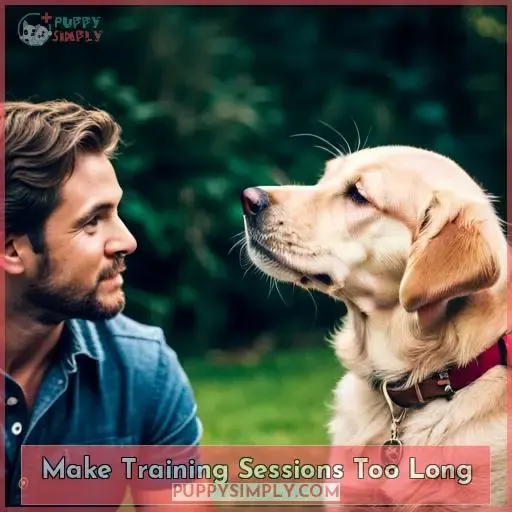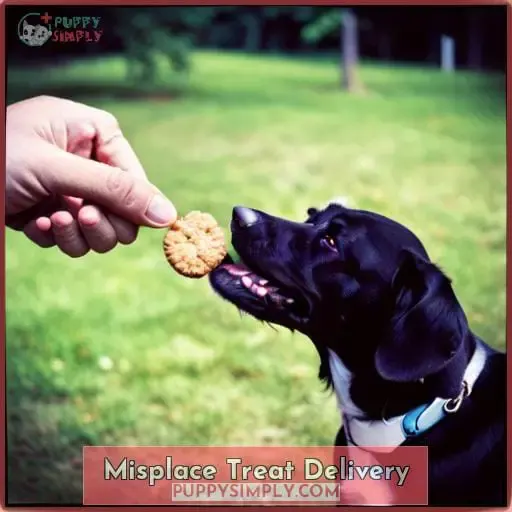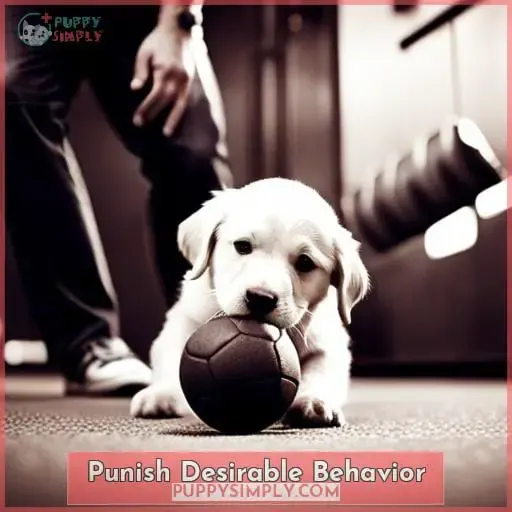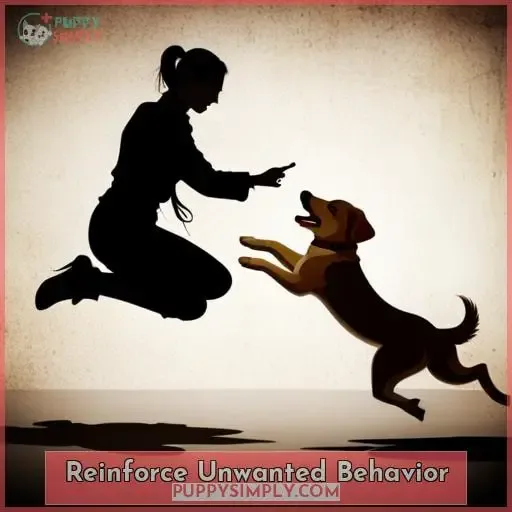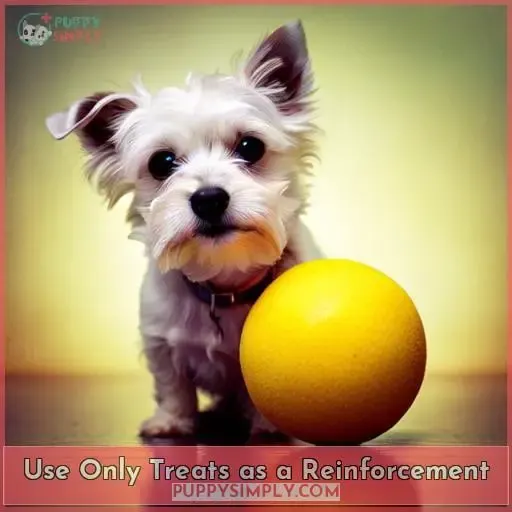This site is supported by our readers. We may earn a commission, at no cost to you, if you purchase through links.
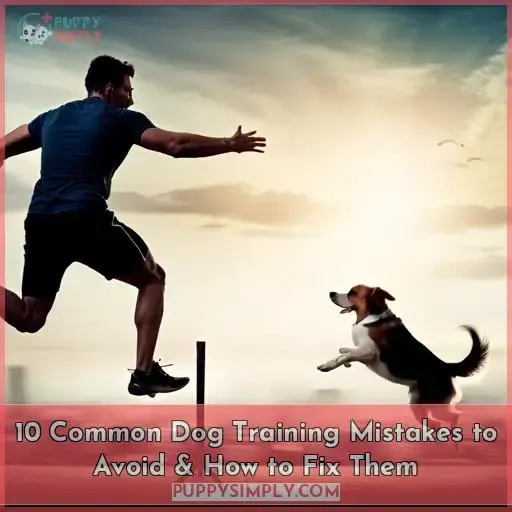 Struggling to train your dog? Avoid these 10 common mistakes to ensure your furry friend is well-behaved in no time!
Struggling to train your dog? Avoid these 10 common mistakes to ensure your furry friend is well-behaved in no time!
- Not being consistent
One of the most important things you can do when training your dog is to be consistent with your commands and expectations. If you give your dog a command one day and then let them get away with not following it the next, they will quickly become confused and frustrated.
It’s important to set clear rules and expectations for your dog and to enforce them consistently.
- Using harsh punishment
While it may seem like the best way to get your dog to behave, harsh punishment can actually be counterproductive. When you punish your dog, you are creating a negative association with the thing you are punishing them for.
This can lead to fear, anxiety, and aggression. Instead of using punishment, focus on positive reinforcement and reward your dog for good behavior.
- Not giving your dog enough exercise
A tired dog is a well-behaved dog. When your dog is bored and has pent-up energy, they are more likely to misbehave. Make sure to give your dog plenty of exercise every day to help them stay calm and focused.
- Not socializing your dog
Socialization is essential for dogs to learn how to interact with other people and animals. If your dog is not socialized properly, they may become fearful or aggressive around strangers. Make sure to expose your dog to a variety of people and animals in a positive way from a young age.
- Not teaching your dog basic commands
Commands like sit, stay, come, and down are essential for every dog to know. These commands will help you to control your dog’s behavior and keep them safe.
- Allowing your dog to jump up on people
Jumping up on people is a common problem for dogs, but it is also a very bad habit. Jumping up can be dangerous for both your dog and the person they are jumping up on. It can also be very intimidating for people who are not familiar with dogs. Teach your dog to sit instead of jumping up on people.
- Allowing your dog to pull on the leash
Leash pulling is another common problem for dogs. It can be dangerous for both you and your dog, and it can also make walking your dog very unpleasant. Teach your dog to walk on a loose leash by using positive reinforcement and rewards.
- Giving your dog too much freedom
While it is important to give your dog plenty of freedom, it is also important to set limits. If you allow your dog to have too much freedom, they may start to misbehave. Make sure to set clear boundaries for your dog and to enforce them consistently.
- Not taking your dog to the vet regularly
Regular vet visits are essential for keeping your dog healthy and happy. Your vet can help you to identify and treat any health problems early on, and they can also provide you with advice on training and behavior.
- Not getting help from a professional trainer
If you are struggling to train your dog, don’t be afraid to get help from a professional trainer. A trainer can help you to identify the problems you are having and develop a plan to address them.
Table Of Contents
- Key Takeaways
- Make Training Sessions Too Long
- Deliver Treats Too Slowly
- Misplace Treat Delivery
- Punish Desirable Behavior
- Reinforce Unwanted Behavior
- Fail to Teach a Dog to Generalize
- Use Only Treats as a Reinforcement
- Be Inconsistent With Cues
- Bribe Instead of Reinforcing
- Expect Results Too Soon
- Frequently Asked Questions (FAQs)
- Conclusion
Key Takeaways
- Be consistent with your training methods.
- Use positive reinforcement instead of harsh punishment.
- Give your dog enough exercise.
- Socialize your dog with other people and animals.
Make Training Sessions Too Long
Making training sessions too long is one of the most common mistakes dog owners make.
When training sessions are too long, your dog will start to lose focus, get bored, and become frustrated.
To avoid this, keep your training sessions short and sweet. Aim for 30-90 seconds per session, and take breaks throughout the day if needed.
Deliver Treats Too Slowly
Delivering treats too slowly can cause your dog to lose interest in the training session.
- Give the treat immediately after your dog performs the desired behavior.
- Make sure the treat is small enough for your dog to eat quickly.
- Hold the treat close to your dog so they don’t have to look away.
- Repeat the behavior several times so your dog has a chance to earn multiple treats.
- Use a variety of treats to keep your dog interested.
Misplace Treat Delivery
If you move the treat too far away from your dog, they may not be able to see it and will lose interest.
Also, avoid:
- Putting the treat on the floor
- Holding it too high
- Handing it to your dog too late
Make sure the treat is big enough and that you deliver it right away.
Punish Desirable Behavior
You should also avoid punishing your dog for performing a desirable behavior. This can actually make them less likely to do the behavior in the future.
Instead, focus on rewarding the behavior you want to see and ignoring the behavior you don’t want to see.
Reinforce Unwanted Behavior
Even if you don’t mean to, you can accidentally reinforce unwanted behavior by giving your dog attention when they do it.
For example, if your dog barks at the door, and you open the door to let them out, you’re reinforcing the barking behavior.
Instead, ignore the unwanted behavior and only reward your dog when they’re quiet.
Fail to Teach a Dog to Generalize
Failing to teach your dog to generalize behaviors will make them less successful in different environments.
To teach your dog to generalize, you need to:
- Practice in a variety of settings
- Use real-world scenarios
- Vary the environment
- Use the same cues and rewards every time you train your dog.
Use Only Treats as a Reinforcement
Don’t use only treats as a reinforcement.
Dogs are motivated by different things, so you need to find out what motivates your dog and use that as a reinforcement.
You can also use a combination of reinforcements, such as treats, praise, and play.
Be consistent with your cues and reinforce, don’t bribe.
Don’t expect results too soon, and get help when you need it.
Be Inconsistent With Cues
Are you using the same cues every time you train your dog?
If not, you’re making a big mistake. Dogs learn by association, and if you use different cues for the same behavior, they’ll get confused and won’t know what you want them to do.
To avoid this mistake, make sure to use the same cues every time you train your dog. This includes using the same words, hand signals, and locations. You can also use different objects or people to help your dog associate the cue with the behavior.
For example, if you’re teaching your dog to sit, you should always use the same word (sit) and hand signal (your hand held up in front of you). You can also use a clicker or other marker to help your dog understand when they’ve performed the behavior correctly.
By being consistent with your cues, you’ll help your dog learn faster and more effectively.
Bribe Instead of Reinforcing
Bribing your dog with treats to perform a behavior isn’t the same as reinforcing the behavior. When you bribe your dog, you’re giving them a treat in exchange for doing something they already wanted to do. This can confuse your dog and make them lose focus on the task at hand. It can also be less effective and less efficient than reinforcing the behavior.
Here are 5 reasons why you should avoid bribing your dog:
- It can confuse your dog.
- It can cause frustration.
- It can make your dog lose focus.
- It can be less effective.
- It can be less efficient.
Instead of bribing your dog, try reinforcing the behavior by giving them a treat after they’ve performed the behavior. This will help to strengthen the association between the behavior and the reward.
Expect Results Too Soon
Expecting too-quick results can lead to frustration and discouragement for both you and your dog. Training takes time, and you need to be patient and consistent with your dog. Here are a few things to keep in mind to avoid expecting too-quick results:
What to Avoid
- Expecting your dog to learn a new behavior overnight
- Not taking account of distractions
- Not training your puppy or young dog
- Not training your adult or senior dog
- Not getting help when you need it
What to Do Instead
- Break down the behavior into smaller steps and reward your dog for each step
- Train your dog in a quiet environment and gradually introduce distractions
- Puppies and young dogs need more frequent training sessions than adult dogs
- Adult and senior dogs can still learn new behaviors, but they may need more patience and motivation
- If you’re struggling to train your dog, don’t be afraid to get help from a professional dog trainer
Frequently Asked Questions (FAQs)
What is the difference between punishing and reinforcing behavior?
Punishing a behavior makes it less likely to happen again, while reinforcing a behavior makes it more likely to happen again.
How can I teach my dog to generalize a behavior?
To teach your dog to generalize a behavior, practice it in:
- Different locations
- With different distractions
- With different people
What is the best way to use treats as a reinforcement?
The best way to use treats as a reinforcement is to give them immediately after your dog performs the desired behavior.
Aim the treat to where you want your dog to be looking to help them learn the correct position.
How can I be more consistent with my cues?
To be more consistent with your cues:
- Use the same cues every time.
- Wait for your dog to respond before giving the treat.
- Avoid repeating the cue.
What should I do if I’m expecting results too soon?
Expecting results too soon can lead to frustration and discouragement. Remember that training takes time and patience.
Be consistent with your training methods and rewards, and don’t give up.
Conclusion
Avoiding these common mistakes will help you train your dog successfully and ensure that you have a well-behaved furry friend for years to come.
-
Not being consistent with your training methods. Dogs thrive on consistency, so it’s important to use the same commands and techniques every time you train your dog. If you’re not consistent, your dog will get confused and won’t know what you expect of them.
-
Giving up too easily. Training a dog takes time and patience. There will be times when your dog doesn’t seem to be getting it, and you may be tempted to give up. But it’s important to remember that all dogs are different, and some will take longer to learn than others. If you give up too easily, you’ll never see the results you want.
-
Not rewarding your dog for good behavior. Dogs are motivated by rewards, so it’s important to reward them when they do something you want them to do. This could be anything from giving them a treat to saying good dog. When you reward your dog for good behavior, you’re reinforcing the behavior and making it more likely to happen again.
-
Punishing your dog for bad behavior. Punishment can be effective in training dogs, but it’s important to use it correctly. If you punish your dog too harshly or too often, you could damage your relationship with them and make them afraid of you. Instead, focus on using positive reinforcement to encourage good behavior.
-
Not taking your dog to obedience school. Obedience school can be a great way to teach your dog basic obedience commands and help them learn how to behave in different situations. If you’re not sure how to train your dog, or if you’re having trouble getting results, obedience school can be a valuable resource.

